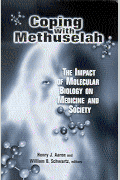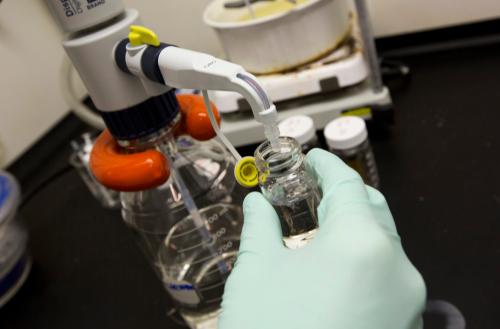Among the long list of Nigeria’s woes, AIDS is seldom mentioned. Yet, Nigeria has the second largest number of HIV-infected persons in the world, now estimated at 3 million. If South Africa, the country with the largest number of HIV-infected persons, succeeds in sharply reducing its infection rate, will Nigeria eventually surpass it on the world HIV/AIDS chart? That is statistically possible given Nigeria’s population, three times larger at 150 million, and its weaker health and other infrastructures.
What will it take to curb Nigeria’s spiraling AIDS pandemic? A team of Nigerian and American researchers, supported by the University of Ibadan, Nigeria and Northwestern University have sought answers by studying the social, economic and political barriers to effective prevention and treatment. The program is the Research Alliance to Combat HIV/AIDS (REACH) whose data and findings were presented in Nigeria’s capital, Abuja, on May 4. Other dissemination events followed at the two collaborating institutions, at the Chicago Council on Global Affairs, and concluded at the Brookings Institution on May 27.
For several years, the central focus of the AIDS campaign has been the provision of anti-retroviral drugs and creating the necessary testing and monitoring facilities. It has brought life-saving treatment to 4 million people worldwide. But that has left 6 million with the disease currently untreated. In sub-Saharan Africa, five persons are newly infected for every two receiving medical care. The number of infected persons is growing faster than the pool of donor funds to treat them. U.S. aid dollars now cover the cost in Nigeria of counseling and treatment for 300,000 of the 350,000 under care. Yet 200,000 are untreated under the current guidelines. Over a million more would be treated if Nigeria sought to comply with new World Health Organization guidelines for starting drug treatment. Not only must Nigeria find a way to get treatment to the large pool of infected persons, it has to slow its rate of infection. These two interrelated challenges can only be surmounted by an exceptionally bold, comprehensive and sustained effort.
REACH began on the premise, now all-too-evident, that treatment was just one part of the answer. Today, not only are many infected persons not treated, a substantial number do not know their HIV status and thus continue transmitting the disease. Even proven prevention techniques are blunted in Nigeria because of the country’s woeful public health system. Only 62 percent of pregnant women in REACH studies have had HIV counseling and testing (HCT). Of those tested, almost a third did not return for their results. Yet, the timely administering of long available drugs can sharply reduce transmission of the virus to newborns. It is not surprising that 56,000 HIV-infected babies are born each year in Nigeria.
On the basis of REACH survey data, Nigeria, via its National Agency for the Control of AIDS (NACA), can begin a substantially scaled-up program. A key component of this program would be expanded community studies on the barriers to effective prevention and treatment. REACH recommendations include the following:
- Reduce sharply the number of persons who have not been HIV-tested in any 12 month period.
- Provide HIV tests and appropriate counseling as routine aspects of all healthcare services.
- Engage communities and myriad public, private and religious institutions in action programs focused on achieving high and sustained HCT rates.
- Take HCT door-to-door using rapid testing methods.
- Target the specific barriers to HCT increase shown in REACH studies such as ignorance about risk, assumed cost of drug treatment, confidentiality concerns, and uncertainty about follow-up care.
- Develop more effective ways to reach vulnerable youths, especially girls.
- Engage political, religious, community and entertainment leaders in high-profile prevention events.
- Design innovative approaches to combat stigma.
- Commit Nigerian funds over several years to prevention and care so that a greater proportion of expenditures is covered domestically.
Nigeria’s new president, Goodluck Jonathan, has brought renewed dynamism and direction to his country’s federal government. By supporting bold action on HIV/AIDS, he can quickly align Nigeria with other African countries such as Botswana and South Africa that have adopted more aggressive approaches to reversing this relentless pandemic.
The Brookings Institution is committed to quality, independence, and impact.
We are supported by a diverse array of funders. In line with our values and policies, each Brookings publication represents the sole views of its author(s).



Commentary
Op-edNigeria’s HIV/AIDS Pandemic: Time for Bolder Action
June 11, 2010